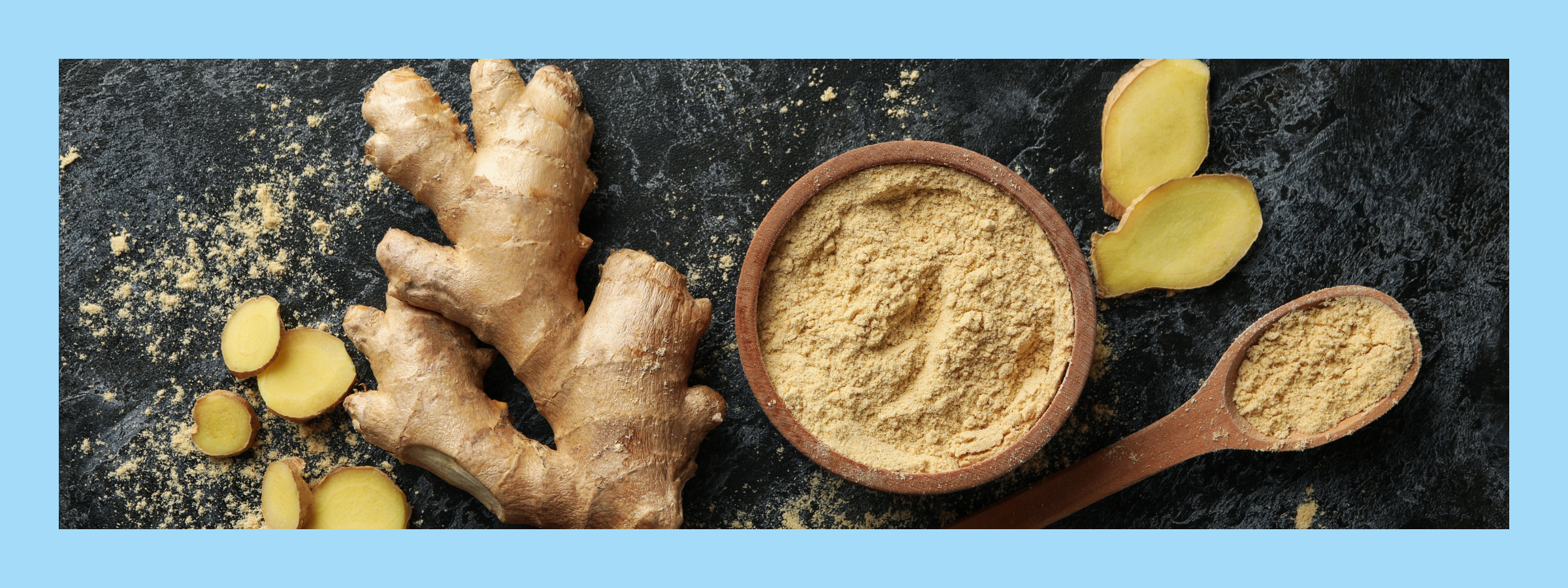
How to stop nausea fast: why does ginger help nausea?
History | Health benefits | Why does ginger help nausea? | Types of ginger | Side effects | How to use
History of Ginger
Ginger is part of the same family as turmeric and cardamom, and is harvested from the thick stem (or rhizome) of the flowering Zingiber officinale plant. Its medicinal properties have long been used for gastrointestinal relief, with origins dating back 5,000 years throughout South East Asia, India, and China. It was a favourite of ancient civilizations because of its fragrance, taste, and medicinal properties, leading it to be traded as a precious resource.
In modern times, ginger's effectiveness can be applied to relief from chemotherapy-induced nausea, a common and unpleasant side effect faced by cancer patients. Ginger's natural compounds, like gingerol, have been studied heavily for their role in treating nausea and vomiting. This makes it a valuable addition to oncology nutrition therapy. For those undergoing chemotherapy, this age-old root offers a gentle yet powerful way to ease discomfort.
Health Benefits
- Improve recovery times for fever or cold
- Reduces nausea
- Lowers pain & menstrual pain
- Decreases blood pressure and blood sugar
- Supports heart and liver health
- Anti-inflammatory qualities
In a study with 576 people with cancer taking 0.5–1 gram of liquid ginger root extract twice daily for 6 days starting 3 days before chemotherapy, nausea experienced within the first 24 hours of chemo was significantly reduced compared to a placebo.
Why does ginger help nausea?
The odour-producing principles Gingerols and Shogaols are effective in preventing nausea and vomiting by blocking the actions of the neurotransmitters acetylcholine and serotonin in the body. Acetylcholine triggers involuntary stomach contractions, while serotonin can stimulate the vomiting reflex. By preventing these chemicals from working, you can increase digestive responsiveness and speed stomach emptying, which can reduce nausea.
Types of Ginger
Ginger's content of these compounds varies depending on the form it is prepared in. Some researchers have determined that dried ginger has the highest concentrations, followed by fresh ginger and powdered ginger tea.
As compared to raw ginger, the compound shogaols is highly concentrated in dried ginger, whereas gingerols are highly concentrated in raw ginger. Gingerols are the active agents in raw ginger, but they are transformed into shogaols when dried or cooked.
While gingerols and shogaols have similar antimicrobial and antioxidant properties, shogaols are twice as potent. This indicates that supplements derived from dried ginger may be more biologically active.
Side Effects & Who Should Never Use It
In general, research indicates that ginger is safe to use for a wide variety of conditions. However, some people have experienced side effects, including heartburn, diarrhoea, or stomach pains. This usually depends on the individual, the dosage, and the frequency of use.
Below are the cautions you need to be aware of:
- You should be cautious if you use blood thinners, as ginger may interact with these drugs, though the evidence is mixed.
- Taking large doses of ginger may increase bile flow, so it’s not recommended if you have gallbladder disease.
- Pregnant women should avoid taking ginger supplements close to labour, as it may worsen bleeding. Pregnant women with a history of miscarriage or clotting disorders should also avoid it.
It’s always best to ask your medical provider for guidance.
How to Use Ginger For Nausea
- Raw Ginger: Use it in cooking, baking, soups, or smoothies.
- Ginger capsules and tablets: Easy to swallow or available as chewable sweets for those who struggle with pills.
- Ginger flavoured drinks: Options include carbonated and still beverages.
- Ginger Tea: Add lemon and honey for extra taste.
- Ginger essential oil: Use in a diffuser for an energy boost and reduced nausea.
- Ginger moisturiser: Supports the skin’s healing capacity and promotes normal blood circulation.
- Ginger Powder: Dissolves quickly in hot water and is available in many flavours for soothing nausea.
Discover more natural ways to reduce nausea with our guide - How to Reduce Nausea Naturally: Lemons or Peppermint











Leave a comment
This site is protected by hCaptcha and the hCaptcha Privacy Policy and Terms of Service apply.